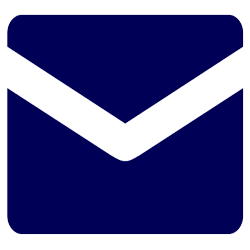
Nymphing Steelhead
by Steve May - Originally published in Real Fishing Magazine - March 10, 2004
One of the fly fishing traditions I have a tough time understanding is steelhead fly fishing. The accepted way to fish for migratory rainbow trout is with a wet fly swing. The flies usually resemble nothing in nature and are fished with a technique does not imitate any natural creature. The techniques do work, but are based on history, not current knowledge of the feeding habits of steelhead.
I enjoy fishing for steelhead on the swing because there is little in fly fishing that can compare to a steelhead smashing your fly on a tight line. But I believe there are easier ways to get hooked up. What I have found is that treating steelhead like the oversized trout is way more effective. In my opinion, Great Lakes steelhead are simply oversized rainbow trout that I prefer to target with techniques used on their smaller relatives. These same techniques also work out west.
Fishing for resident trout is usually done by matching the hatch to imitate the foods the fish are feeding on. Nymphing techniques are effective for steelhead because they spent their younger days eating bugs, eggs and other foods as juveniles before they went to larger waters to feed on just about anything that would fit into their mouths. When they return to their natal river to spawn they head upstream under favorable conditions and wait until spawning conditions are ideal. During this time steelhead snack to maintain their body weight and out of something to do!
I have found that the easiest way to get a fly in front of a hungry steelhead is with a strike indicator and weight attached to the leader. Higher flows and cooler water coincide with steelhead being in the river. This means that keeping your fly near the bottom is the most productive.
Just make sure your tackle is up to the task of landing these fish they are not at all like a small resident trout when hooked. Your light weight trout rod just won’t cut it. I like a longer rod, usually around ten feet long in the 7-9 weight range. Couple this with a floating line and an appropriate leader and a strike indicator. Then attach split shot within a foot or two of the fly. I adjust the rig so that the distance from the indicator to the weight is about one and a half times the water depth and the weight is adequate to get the flies to the bottom quickly.
Fly selection surprises many people. Since the fish are snacking I prefer to go with small flies. Many people are skeptical when I tell him that a pea sized piece of yarn on a small hook can fool fish over ten pounds. My Great Lakes fly selection is comprised largely of size #14-#8 flies. Simple nymphs like stoneflies, woolly buggers and hares ear nymphs are go to flies.
On the west coast bigger flies are in order, but the best flies are still smaller than many of the traditional wet fly patterns. Try meaty egg flies or various brightly colored patterns and stonefly nymphs tied on beefy hooks. Other good options are rabbit fur creations and variations on the egg sucking leech in the #6-#2 range. These patterns are effective on steelhead and various species of salmon coming out of the Pacific.
Try breaking from tradition this fall. If you treat steelhead more like resident trout I am sure you will soon become supporter of nymphing for steelhead.
< Back to Articles





